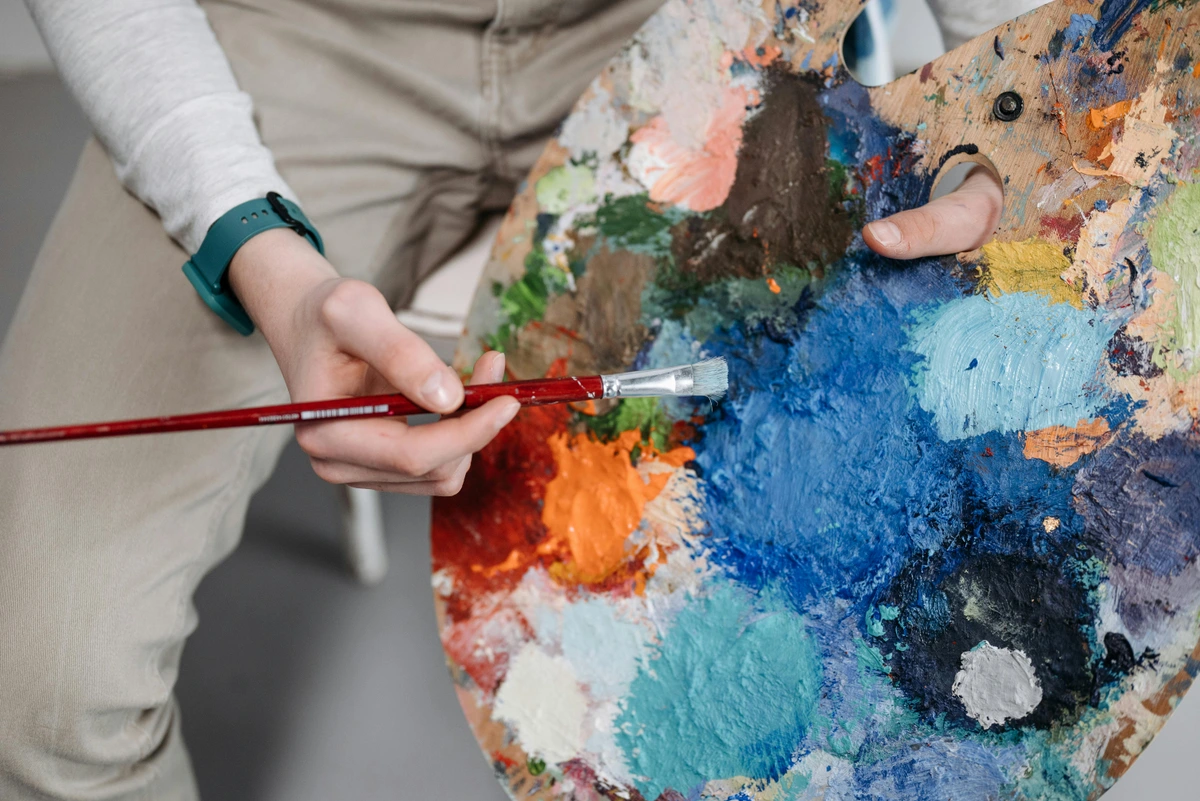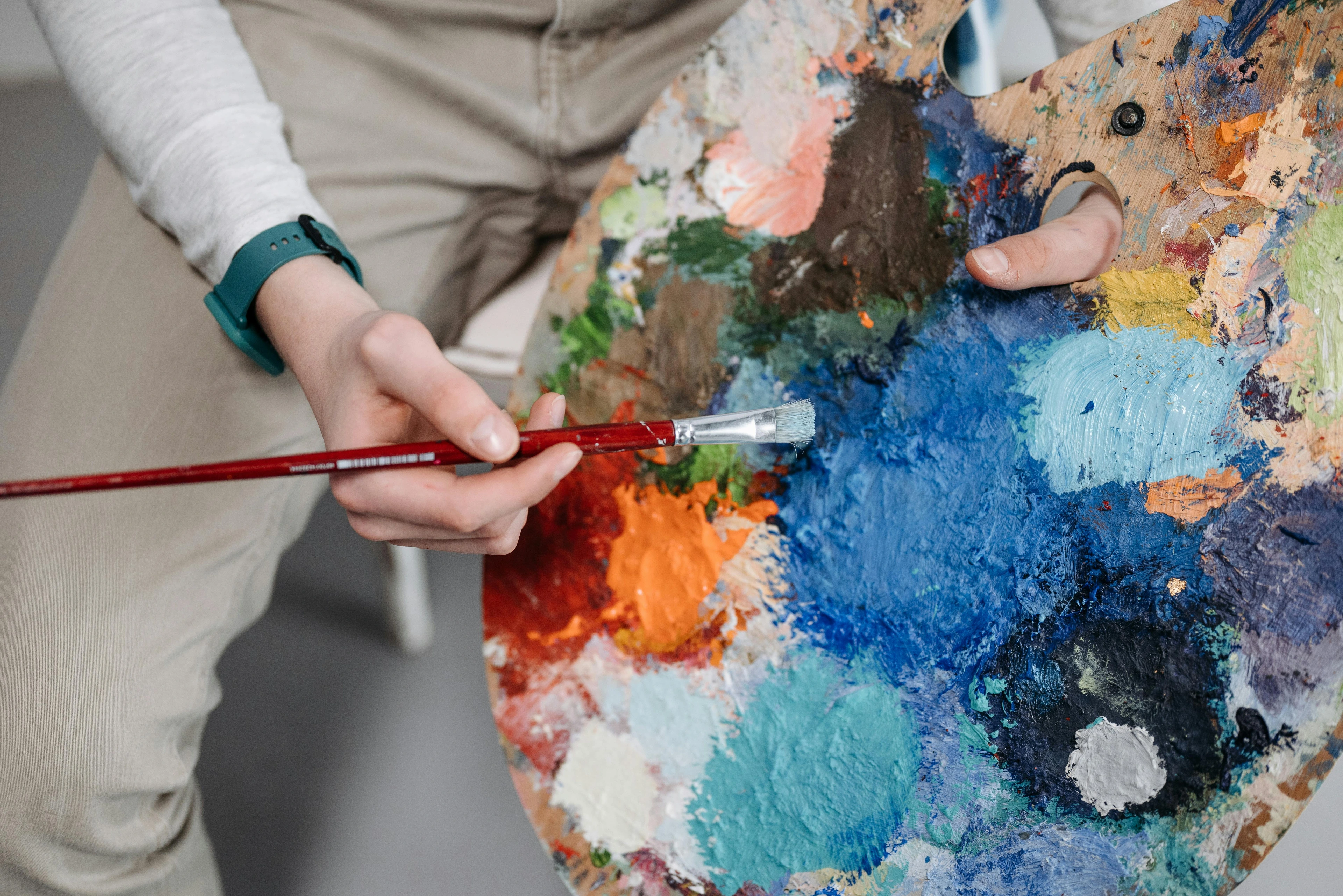
Art Quotes About Love: An Artist's Personal Journey Through Emotion & Creation
Explore how artists like Picasso, Van Gogh, Matisse, Rothko, Kahlo, and others expressed love in its many forms – romantic, self, familial, nature, process, loss, community, and humanity – through their words, techniques, and work. An artist's deeply personal journey through powerful art quotes.
Art Quotes About Love: An Artist's Personal & Engaging Journey Through Emotion and Creation
Ah, love. It's one of those big, messy, beautiful, sometimes painful things that artists have been trying to capture forever. It's the dizzying heights of new romance, the quiet comfort of long-term partnership, the fierce bond of family, the deep connection to nature, the complex relationship with oneself, the love of a place, the passion for a community, or even the complicated, sometimes painful sides of connection and self-discovery. Love finds its way onto the canvas, into the sculpture, and yes, into the words artists use to describe their world. This article is my personal journey through some powerful art quotes about love, exploring how these masters and modern voices articulated feelings that resonate deeply with my own experience as an artist, touching on the myriad forms this fundamental human experience takes.
As an artist myself, I've often found myself wrestling with how to express deep emotion. There was this one time, I was trying to paint a feeling of pure, uncomplicated joy – the kind you feel when someone you love truly sees you. I kept layering bright, happy colors, but it just felt... flat. Like painting with mud, as I've said before. The texture felt wrong, the vibrancy muted. It wasn't until I stopped trying to show the joy and started thinking about what words came to mind, what other artists had said about feeling seen or understood, that the paint finally started to flow. It was like a dam broke, not of water, but of feeling, translating into color and form. Hearing how other artists, the masters and the lesser-known alike, have articulated their feelings about love and life can be incredibly insightful, sometimes even surprisingly relatable. It's like getting a peek behind the curtain, not just at their art, but at their hearts. Understanding the historical and emotional connection between art and love helps frame this personal exploration.
Why Do Art and Love Go Hand-in-Hand? A Personal Take
Think about it. Both art and love are about connection, expression, and seeing the world (or a person) in a unique, often heightened way. Art can make us feel something deeply, just like love does. It can challenge us, comfort us, or simply make us see beauty we hadn't noticed before. Isn't that a bit like falling in love? Suddenly, the ordinary seems extraordinary. For me, when I'm truly engaged in creating, it feels like I'm seeing the world with new eyes, noticing the subtle shifts in light, the unexpected harmony of colors, the hidden textures. It's a state of heightened awareness, much like the way love can make the everyday feel vibrant and full of possibility. It's this shared intensity of perception and emotion that binds art and love together. Art can also foster love in the viewer – a love for beauty, a love for a subject, a love for the artist's unique perspective, or even a deeper love for humanity itself.
Historically, love has been a central theme in art, spanning across all art styles and periods. From mythological depictions of Cupid and Psyche in classical art to Renaissance portraits celebrating marital bonds, to the intense emotions of Romanticism, the symbolic connections explored by the Symbolists, the idealized relationships in Pre-Raphaelite works, and on to modern abstract works exploring the feeling of connection rather than a literal representation. Consider iconic pieces like Klimt's 'The Kiss' or Renaissance wedding portraits – they are steeped in the visual language of love. It's a universal language, and art is one of its most eloquent translators.
Love as a theme isn't confined to traditional forms. Contemporary artists continue to explore love in its myriad forms, from the deeply personal to the broadly political. Think of performance art pieces that explore vulnerability and trust, or digital art that examines connection in the digital age. The ways artists express love evolve, but the core impulse remains – the desire to connect, to feel, and to express that feeling.
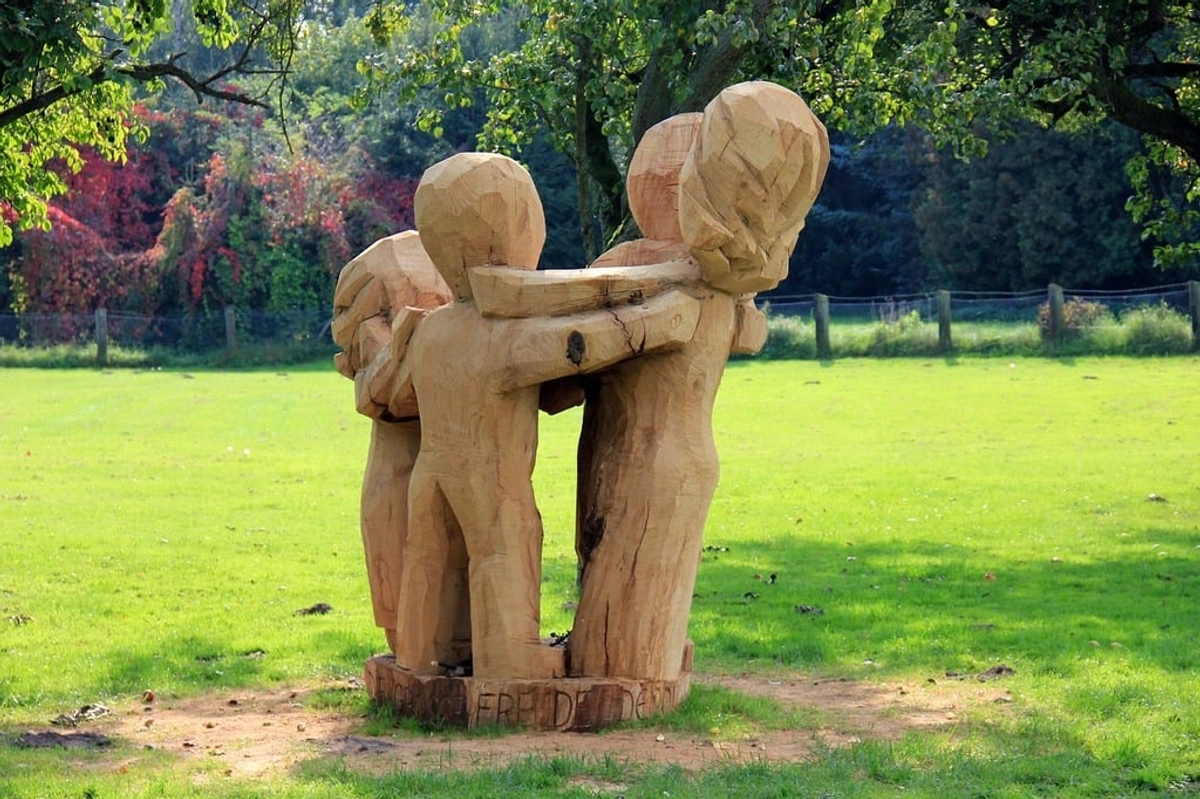
This sculpture, for instance, immediately makes me think of connection and embrace. It's a simple form, but the feeling is undeniable. Art like this can serve as a constant, quiet reminder of the love in our lives.
Common Symbols of Love in Art
Artists throughout history have used a rich vocabulary of symbols to represent love. While the heart is perhaps the most universally recognized today, art history is full of other visual cues. Understanding these symbols can add layers of meaning when viewing art that explores themes of love. It's like learning a secret language the artists are speaking directly to your heart.
Here are some common symbols and how they've appeared in art:
- Doves: Often symbolize peace, fidelity, and devotion, particularly in romantic or marital contexts. You see them frequently in Renaissance wedding portraits or allegorical scenes of harmony.
- Roses: A classic symbol of romance, beauty, and passion. Red roses specifically denote passionate love, while pink can suggest tenderness. They are ubiquitous in still life paintings and portraits, often carrying symbolic weight about the sitter's affections or virtues.
- Cupid and Venus: Figures from Roman mythology representing desire, love, and beauty. Depicted frequently in classical, Renaissance, and Baroque art, often shown with bows and arrows (Cupid) or doves and mirrors (Venus), illustrating the power and effects of love.
- Intertwined Hands: A simple yet powerful symbol of unity, partnership, and fidelity, common in portraits and allegorical works, particularly in the Renaissance and later periods to signify betrothal or marriage.
- Rings: Representing eternal commitment and the cyclical nature of love, often seen in wedding portraits or symbolic representations of marriage vows.
- Colors: Red is strongly associated with passion and desire, while pink suggests tenderness and romance. Gold can symbolize the preciousness or divine nature of love. Blue can sometimes represent fidelity or serenity in love. Think of the vibrant reds in a Baroque depiction of Venus or the serene blues in a portrait signifying loyalty.
- Swans: Often symbolize fidelity and grace, particularly in pairs, representing devoted partnership.
- Shells: In classical art, shells (especially the scallop shell) are associated with Venus, symbolizing birth, fertility, and love.
- Fruit: Certain fruits like apples, pomegranates, or grapes can symbolize fertility, abundance, or the sweetness of love, often seen in still life or mythological scenes.
What symbols of love have you noticed in art, or even used in your own creative endeavors? It's fascinating how these visual cues persist across time and cultures, isn't it?
The Power of an Artist's Words: Why Quotes Matter
While we often focus on the visual output, artists' words about their process, their inspirations, and their lives can be just as powerful. They offer context, reveal personality, and sometimes, they drop little bombs of wisdom that stick with you. Quotes about love, especially from those who dedicate their lives to expressing the inexpressible, carry a certain weight. For me, reading these quotes feels like finding fellow travelers on a sometimes lonely road of creation and emotion. It validates the messy, human side of being an artist. These words also help democratize access to artists' inner worlds, making them feel more human and relatable, bridging the gap between the creator and the viewer.
They remind us that the struggle and the joy of creation aren't just about technique; they're deeply human. And what's more human than love? These words offer a different kind of insight, a direct line from their thinking, feeling selves to ours. So, let's peek behind the curtain and see what some masters and modern voices had to say about this powerful, often chaotic, force, exploring the different facets of love they touched upon. Encountering these quotes felt, for me, like pieces of a puzzle clicking into place, offering new ways to think about both my art and my relationships.
Famous Art Quotes About Love (and My Musings)
Love isn't a single, simple thing. It's a spectrum of emotions and connections. Artists, in their unique ways, have captured many of these facets. Here are some quotes that resonate with me, grouped by the kind of love they seem to touch upon.
Love as Refreshment and Joy
Sometimes, love is the simple, vital force that sustains us, bringing joy and renewal. It's the quiet hum beneath the surface, the energy that keeps you going when the studio feels like a battleground.
Pablo Picasso: Love as the Ultimate Refreshment
Picasso, a man of many periods and many loves (both artistic and personal), had a way with words that was as direct and impactful as his brushstrokes.
"Love is the greatest refreshment in life."
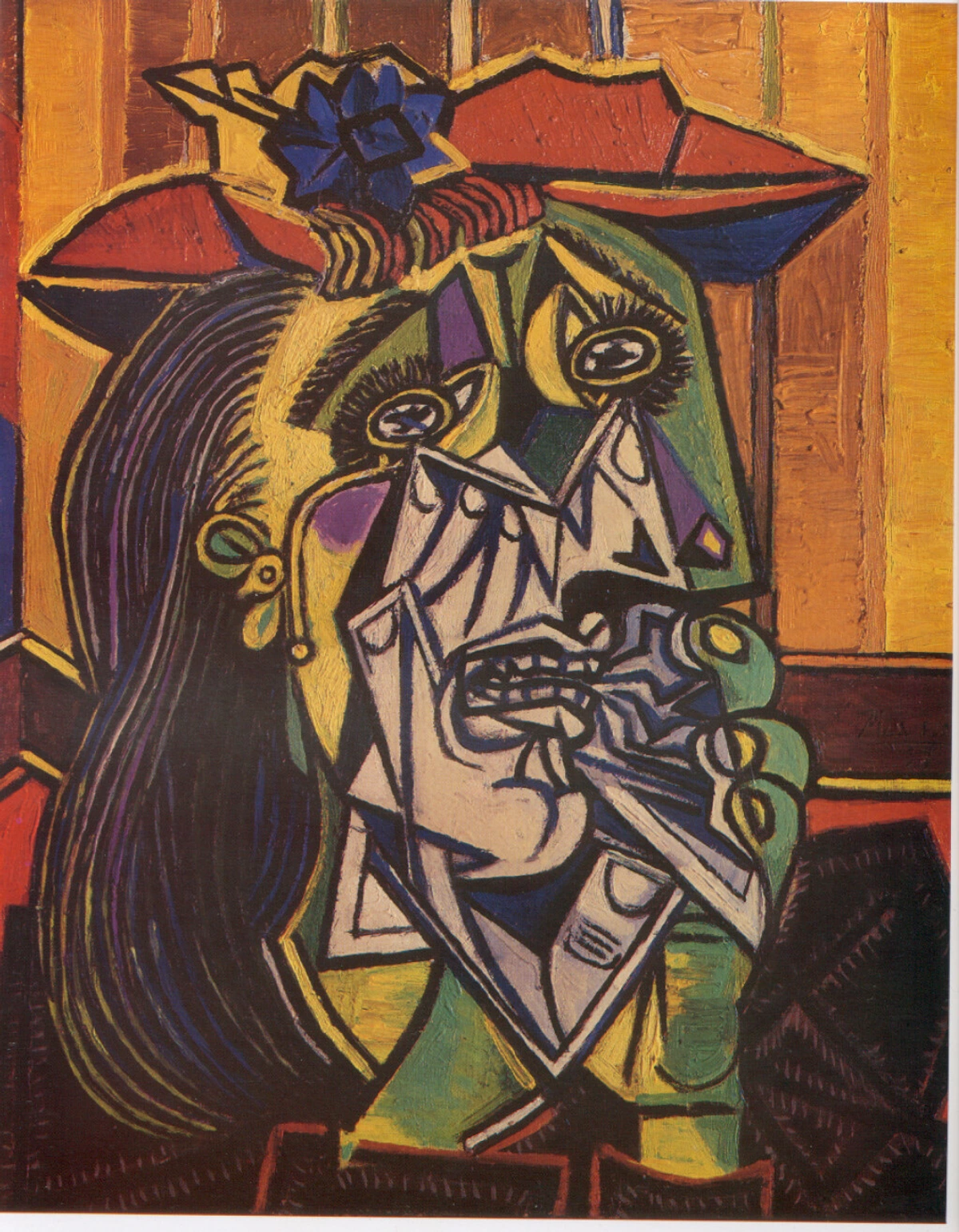
Isn't that just... true? Like a cool drink on a hot day, or that first deep breath after being underwater. Love, in its many forms – a partner's support, a friend's understanding, the simple joy of a pet – revitalizes us. It fuels the engine. I know when I'm feeling connected and loved, my studio feels less like a workspace and more like a playground. It makes the process of making art feel lighter, less like a chore and more like a gift. It's a reminder that even amidst the chaos of creation (or life!), love offers a moment of pure, simple restoration. This quote speaks to the love of life itself, fueled and refreshed by connection, a vital force for an artist as prolific and intense as Picasso. While his Cubist period might seem far removed from 'refreshment,' perhaps the intense, analytical deconstruction was his way of seeking a deeper truth, a different kind of revitalization, or processing the complex emotions tied to his relationships and creative drive during that time. How does love refresh your creative spirit?
Henri Matisse: Finding Joy in the Everyday
Matisse, the master of color and joy, often spoke about the feeling he wanted to evoke in his art – a feeling of balance, purity, and serenity. This pursuit of harmony feels very much aligned with a mature, comfortable kind of love, or perhaps a deep love for the simple beauty of existence.
"There are always flowers for those who want to see them."
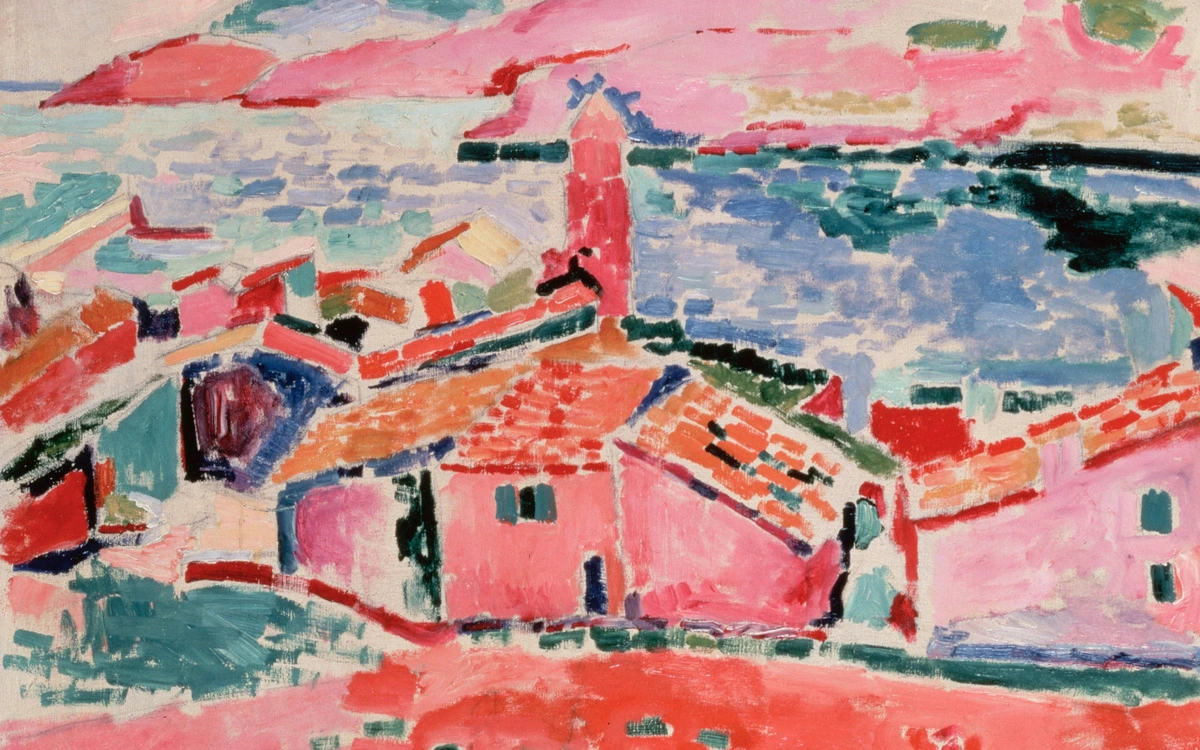
This quote, while simple, speaks to the beauty available to us if we just look. Love isn't always grand gestures; it's often in the small, everyday moments, the 'flowers' we choose to notice. For me, this resonates deeply. I try to actively practice noticing the small joys – the way light hits a surface, the perfect blend of colors in a shadow, the quiet presence of someone I care about. This mindset absolutely influences my approach to color and subject matter in my own art, reminding me to find the vibrant in the mundane. Matisse's art encourages us to find joy in the simple, the vibrant, the present – a beautiful parallel to appreciating the quiet joys in a loving relationship or simply loving the world around you. It's about finding the extraordinary in the ordinary, a core principle in my own artistic philosophy, and one that feels like a gentle, steady form of love for the world. Where do you find your 'flowers'?
Love as Intensity and Passion
Love can be an all-consuming force, driving us with incredible energy, sometimes to the brink. It's the fire in the belly, the overwhelming urge to create or connect, the feeling that your very being is poured into something or someone.
Vincent van Gogh: The Intensity of Devotion
Van Gogh's life was famously full of passion, struggle, and an intense love for the world around him, even when that love wasn't always returned by people. His quotes often reflect this deep emotional landscape.
"I put my heart and soul into my work, and have lost my mind in the process."
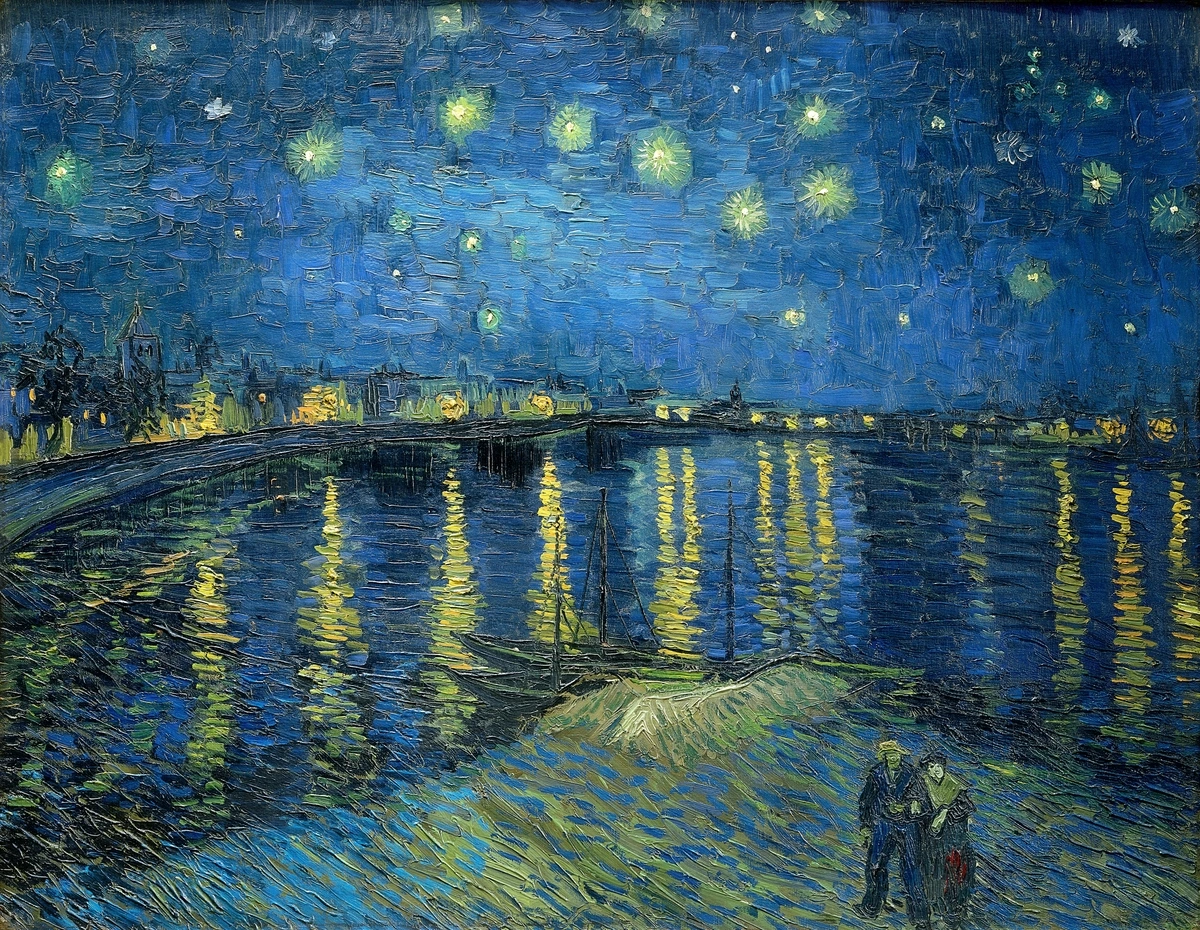
While not strictly about romantic love, this speaks to the intensity of love – the kind that consumes you, the kind you pour your entire being into. Whether it's a person or a passion (like painting!), that level of devotion is a form of love. It reminds me that sometimes, the most profound expressions come from a place of total immersion, even if it feels a little... mad. It's like being swept away by a powerful current, beautiful but potentially overwhelming. You can see this intensity in his use of color and brushstroke, a visual echo of his all-consuming feelings. As an artist, I understand this pull – the feeling that the work demands everything, sometimes blurring the lines between self and creation. His love for the world, for light, for color, was so intense it bordered on the overwhelming, much like a passionate, all-consuming love for another person. This quote embodies the love of the process and the intensity of love of nature and the world, even hinting at the potential cost of such profound feeling. Have you ever felt this level of intensity in your own passions?
Auguste Rodin: The Life Force of Creation and Love
Rodin, the master sculptor, captured the human form and emotion with incredible power. His thoughts on creation often touch upon the dedication and passion akin to love.
"The main thing is to be moved, to love, to hope, to tremble, to live."
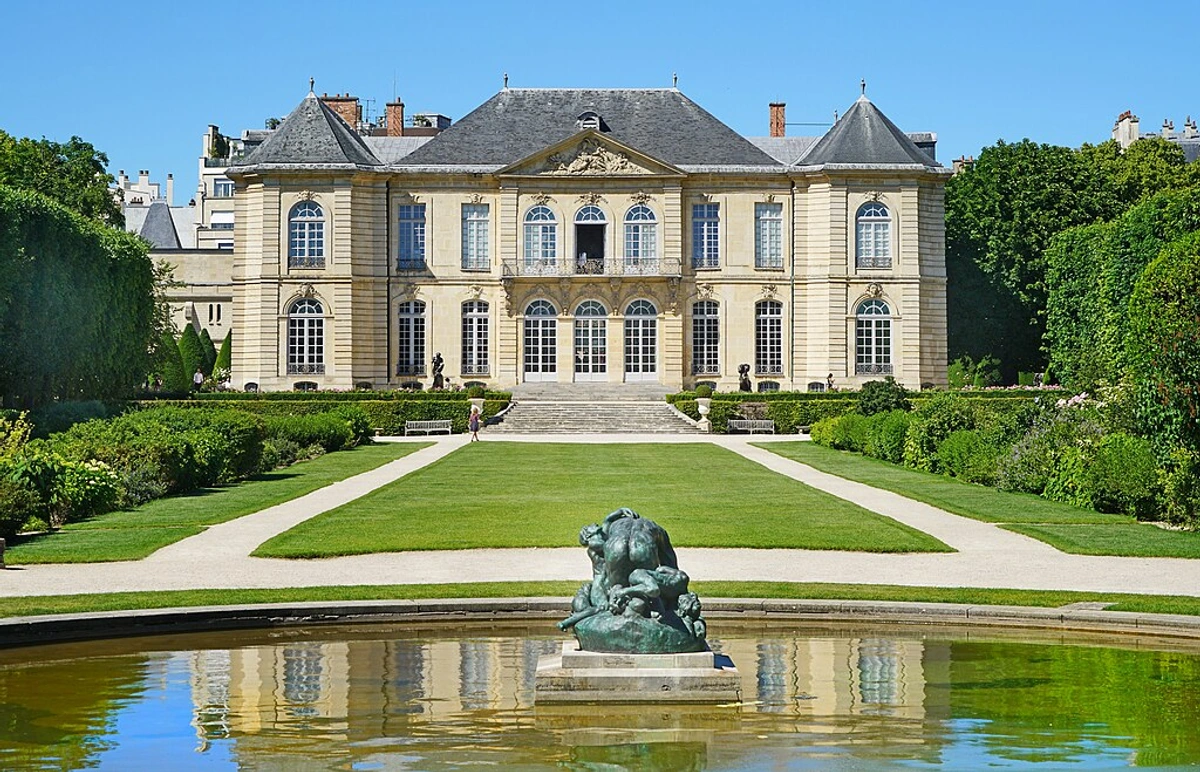
This quote, while broad, perfectly encapsulates the feeling of being alive and engaged – the very state that love often puts us in, and the state that fuels artistic creation. To be moved, to love, to hope, to tremble – these are the raw materials of both life and art. Rodin's sculptures, like 'The Kiss' or 'The Thinker', are imbued with this intensity of feeling. For me, this quote is a call to embrace the full spectrum of human experience, the beautiful messiness of it all, and to let that fuel the work. It's a reminder that art isn't just about technical skill; it's about channeling that vibrant, trembling life force that love embodies. When I'm truly lost in the studio, wrestling with a piece, that feeling of being utterly moved by the process, the hope that it will work, the trembling vulnerability of putting something new into the world – it all feels connected to the intensity of loving and living fully. This quote speaks to the love of life and the love of the process, mirroring the raw, vibrant energy captured in his powerful sculptures. What makes you tremble with life?
Love as Self-Discovery and Processing Pain
Love isn't always external; the relationship we have with ourselves, and how we process the pain that often accompanies connection, is a profound form of love. It's the quiet, sometimes difficult, work of understanding and accepting the person you are, flaws and all.
Frida Kahlo: Self-Love and Processing Pain
Frida Kahlo's work is a raw, unflinching exploration of pain, identity, and complex relationships, often with herself and Diego Rivera. Her words, like her paintings, are deeply personal and powerful.
"I paint myself because I am so often alone and because I am the subject I know best."
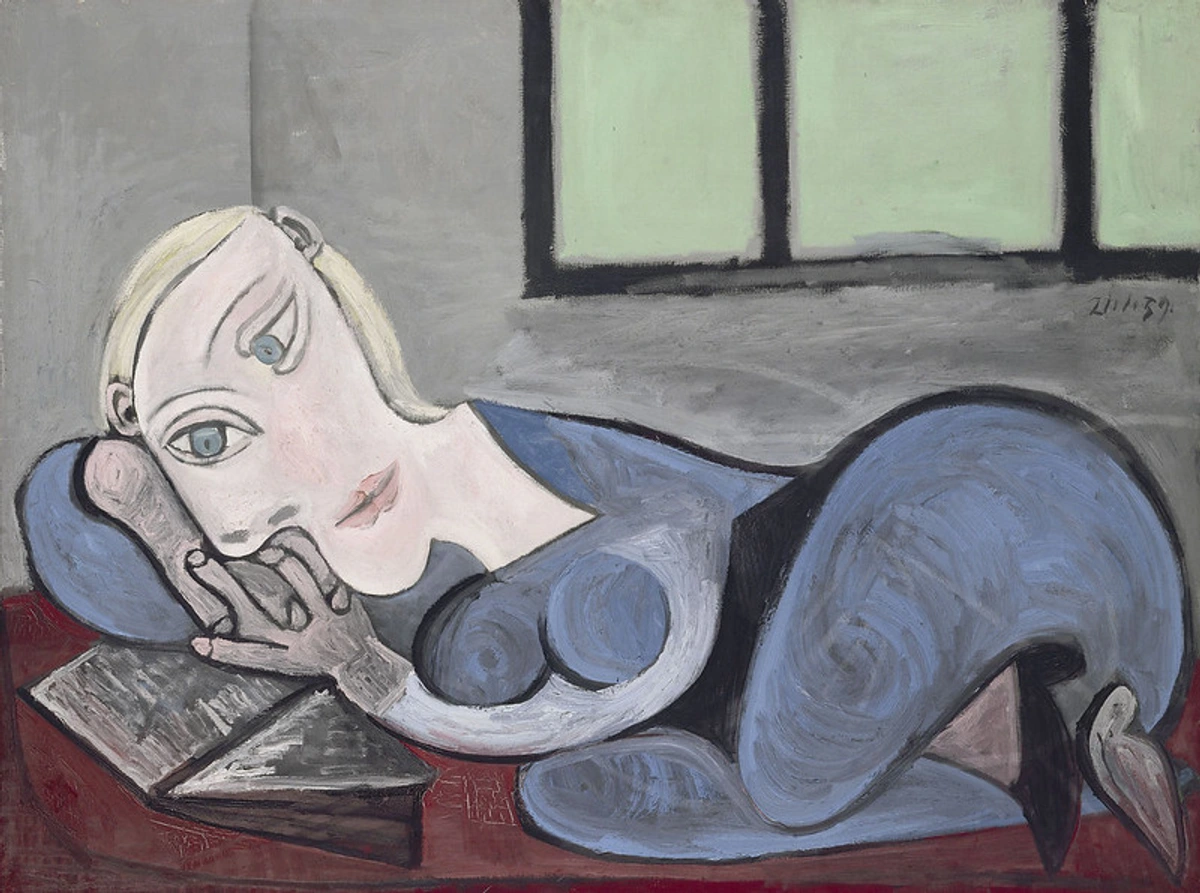
This quote, while seemingly about self-focus, serves as a powerful entry point into discussing a different kind of love: self-love, or perhaps the necessity of deep self-understanding when external love is complicated or absent. Love isn't just about others; it's about our relationship with ourselves. Kahlo's art shows us that processing pain, heartbreak, and complex feelings is part of the human experience of love, and art can be a vital tool for that processing. It reminds me that even in moments of isolation, the act of creation, of truly seeing yourself on the canvas, is a profound act of love. It's about finding strength and connection within, a theme that often surfaces in my own more introspective pieces. Her self-portraits are acts of radical self-acceptance and exploration, a powerful form of self-love born from necessity, and a way to process the love and loss she experienced. How does art help you understand yourself?
Mark Rothko: The Spectrum of Emotion
Rothko's large color fields were intended to evoke deep emotional responses in the viewer. He wasn't interested in depicting the world but in creating an experience, a direct confrontation with feeling.
"I'm not an abstract artist... I'm interested only in expressing basic human emotions: tragedy, ecstasy, doom, and so on."
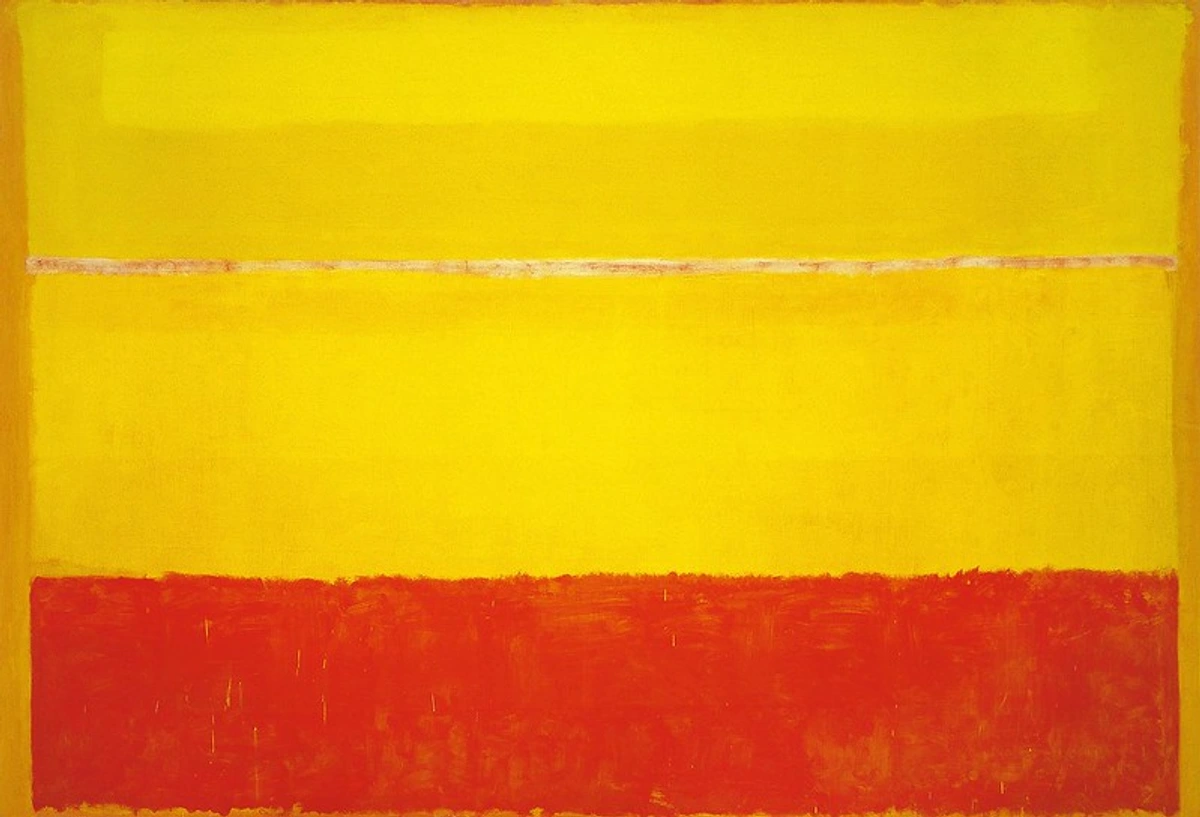
Love isn't just one emotion, is it? It's a whole spectrum – the ecstasy of connection, the potential tragedy of loss, the quiet comfort that wards off doom, the vulnerability that feels both terrifying and essential. Rothko's focus on raw emotion resonates because love is raw emotion. His abstract art invites us to feel, without prescribing what to feel, much like love itself is a deeply personal and often overwhelming experience. My own abstract work aims to connect with viewers on this raw, emotional level, and the full spectrum of feelings associated with love – the joy, the sorrow, the comfort, the chaos – absolutely informs the colors and forms I choose. It's about creating a space for feeling, mirroring the emotional space love occupies in our lives. Rothko sought to create an experience of emotion, much like love is an all-encompassing emotional experience, encompassing both love and loss and the broader love of humanity (or its absence). What emotions does art evoke in you?
Love in Observation and Connection to the World
Love can be found not just in people, but in the way we deeply connect with and appreciate the world around us. It's the quiet awe inspired by nature, the feeling of belonging to a place, or the simple pleasure of noticing the details of the physical world.
Georgia O'Keeffe: Love in Focused Observation
Known for her stunning depictions of flowers, New Mexico landscapes, and New York skyscrapers, O'Keeffe had a deep, almost spiritual connection to the world around her. Her quotes often reflect this intense appreciation.
"When you take a flower in your hand and really look at it, it's your world for the moment."
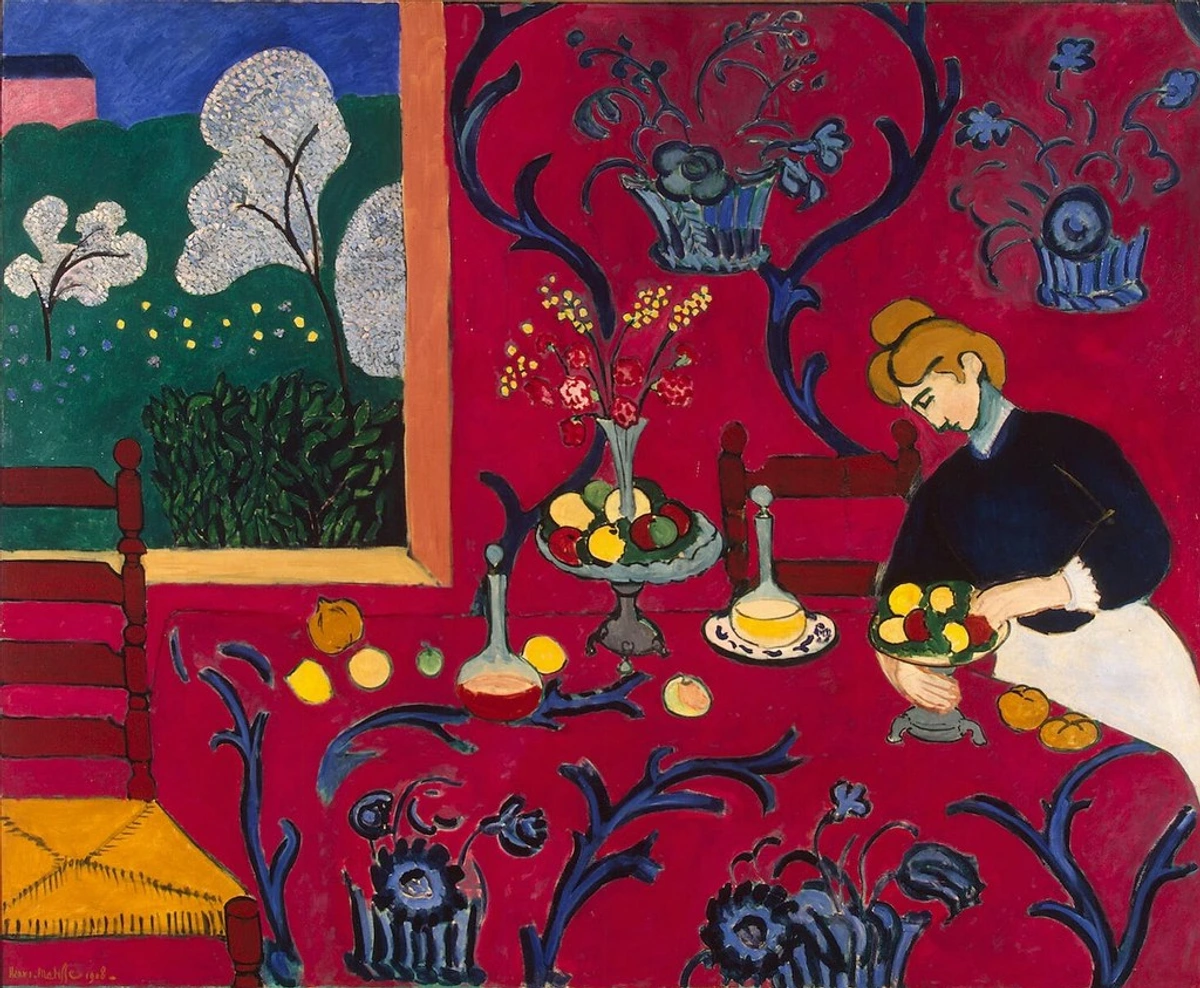
This quote beautifully captures the essence of presence and finding deep connection in the seemingly small things. It's a form of love – a love for the intricate beauty of nature, for the present moment, for the simple act of seeing. This resonates with me because my own art is often inspired by the world around me, finding the extraordinary in the ordinary, much like O'Keeffe found worlds within flowers. It's a reminder that love isn't confined to human relationships; it's in the way we engage with and appreciate the entire world. It's about the intense focus and appreciation that both love and artistic observation require. Her magnified flowers aren't just flowers; they are entire universes, seen with a lover's intensity. I remember spending an hour just sketching the veins on a single leaf once; that intense focus felt like a quiet act of devotion, a small echo of the deep attention love demands. How does the world inspire your sense of connection?
Claude Monet: Love for Light and Moment
Monet, the quintessential Impressionist, dedicated his life to capturing the fleeting effects of light and color in nature. While he didn't often speak explicitly of 'love' in quotes, his entire body of work is a testament to a profound love for the visual world and the transient beauty of a moment.
"My wish is to stay always like this, living quietly in a corner of nature."
![]()
This quote, and his dedication to painting the same subject matter repeatedly under different conditions (like his haystacks or Rouen Cathedral series), reveals a deep, abiding love for the subtle nuances of light and atmosphere. It's a love for the experience of being in nature, observing its constant change. For me, this speaks to the quiet, persistent love that grows over time – not a sudden passion, but a deep appreciation that only comes from dedicated observation and presence. His work, filled with vibrant, broken brushstrokes capturing light, feels like a visual love letter to the world. It reminds me that even the most familiar subjects can reveal new depths if we approach them with attention and affection. It's a beautiful example of love for nature and the simple act of seeing. What do you love to observe in the world?
Love in Relationships: Familial, Platonic, and Beyond
While romantic love often takes center stage, the quiet strength of family bonds, the unwavering support of friends, and the broader love for humanity and community are equally powerful forces that artists explore.
Mary Cassatt: The Quiet Strength of Familial Love
Mary Cassatt, an American Impressionist, is renowned for her intimate depictions of mothers and children. While a specific quote about love from her is hard to pinpoint, her choice of subject matter speaks volumes about a profound type of connection.
![]()
Cassatt's artistic focus on the tender, everyday moments between mothers and children is a powerful expression of familial love. Her paintings capture the quiet intimacy, the protective gaze, the simple gestures that define these bonds. For me, seeing her work is a reminder that love isn't always dramatic; it's often found in the routine, the care, the unspoken understanding between family members. It's a love built on presence and dedication, a different kind of intensity than Van Gogh's, but no less profound. Her dedication to this specific, often overlooked, aspect of human connection feels like a deeply personal expression of what she valued. It highlights how an artist's life and their work are inextricably linked, and how the subjects they choose can be a form of expressing love. What does familial love mean to you?
Ai Weiwei: Love for Humanity and Justice
Ai Weiwei, a contemporary Chinese artist and activist, often uses his work to comment on human rights, political injustice, and the plight of refugees. While not always explicitly about 'love' in the traditional sense, his work is deeply rooted in a profound love for humanity and a desire for a more just world.
"The world is not changing if you don't shoulder the burden of responsibility."
This quote, and his entire body of work, speaks to a powerful, active form of love – a love for fellow human beings that compels action and demands accountability. It's a love that acknowledges suffering and strives for connection and empathy on a global scale. His large-scale installations, like those using refugee life jackets, are not just political statements; they are acts of profound empathy and a call to the viewer to connect with the human cost of global issues. For me, this expands the definition of love in art beyond the personal to the universal, reminding me that my own art can, and perhaps should, connect to the broader human experience, even if subtly. It's a challenging, necessary kind of love that pushes boundaries and confronts discomfort. How does art make you think about the world?
Georgia O'Keeffe: Love for Place
Beyond her love for the details of nature, Georgia O'Keeffe developed a deep, almost possessive love for the landscape of New Mexico. Her paintings of the region are not just depictions; they are expressions of her profound connection to the land, its forms, and its spirit.
"It's a great wonder to me that there are so many people who can live without the great outdoors."
While this quote isn't explicitly about New Mexico, it speaks to her fundamental need for and connection to the natural world, which found its ultimate expression in her love for that specific landscape. Her paintings of adobe houses, bones against the sky, and the vast, empty spaces convey a sense of belonging and deep appreciation for the unique beauty of the region. This is a powerful example of love for a place, a connection that can be as strong and inspiring as love for a person. It makes me think about the places that hold deep meaning for me, and how I might try to capture that feeling in my own work. Is there a place you deeply love?
The Artist's Love Affair with the Craft
Beyond the love expressed in the art or about external relationships, there's a deep, often complicated, love affair between the artist and the act of creation itself. It's a love fueled by passion, dedication, frustration, and moments of pure ecstasy. It's the quiet hours in the studio, the smell of paint, the feel of clay, the endless pursuit of bringing an inner vision into tangible form.
"The object of art is not to reproduce reality, but to create a reality of the same intensity." - Alberto Giacometti

This quote, while not explicitly about love, perfectly captures the intensity of the creative drive. It's a drive born from a profound love for the process, for the materials, for the challenge of bringing something new into existence. As an artist, I know this feeling intimately. The hours spent in the studio, wrestling with a canvas, mixing colors, making marks – it's a labor of love, even when it feels like a battle. There's a deep satisfaction in the physical act of creation, the smell of paint, the feel of the brush in your hand. It's a relationship built on discipline and devotion, a quiet, persistent love that sustains you through the inevitable doubts and failures. This is the love of the craft, the dedication to the materials and the process itself, a fundamental love for any working artist. It's the feeling of being utterly absorbed, where time melts away, and the only thing that matters is the conversation between you and the material. What process do you love to get lost in?
Techniques and Mediums: How Artists Visually Express Love
Beyond the subject matter and the artist's words, the very way an artist creates can embody feelings of love. Different techniques and mediums lend themselves to expressing different facets of this complex emotion. It's like choosing the right words or tone of voice to express a specific feeling in a conversation. The artist's hand, guided by emotion, leaves its mark on the material.
- Color: As seen with Matisse and Rothko, color is a direct line to emotion. Vibrant, warm palettes can express passion and joy, while softer, blended hues might convey tenderness or comfort. Cooler tones could explore longing or the quieter aspects of connection. Think of the passionate reds in a Klimt, or the serene blues in a Monet landscape – they evoke specific feelings tied to love and connection. Rothko's large color fields, like the vibrant yellows and deep reds in his work, are meant to immerse the viewer in pure emotion, mirroring the overwhelming feeling of love or loss.
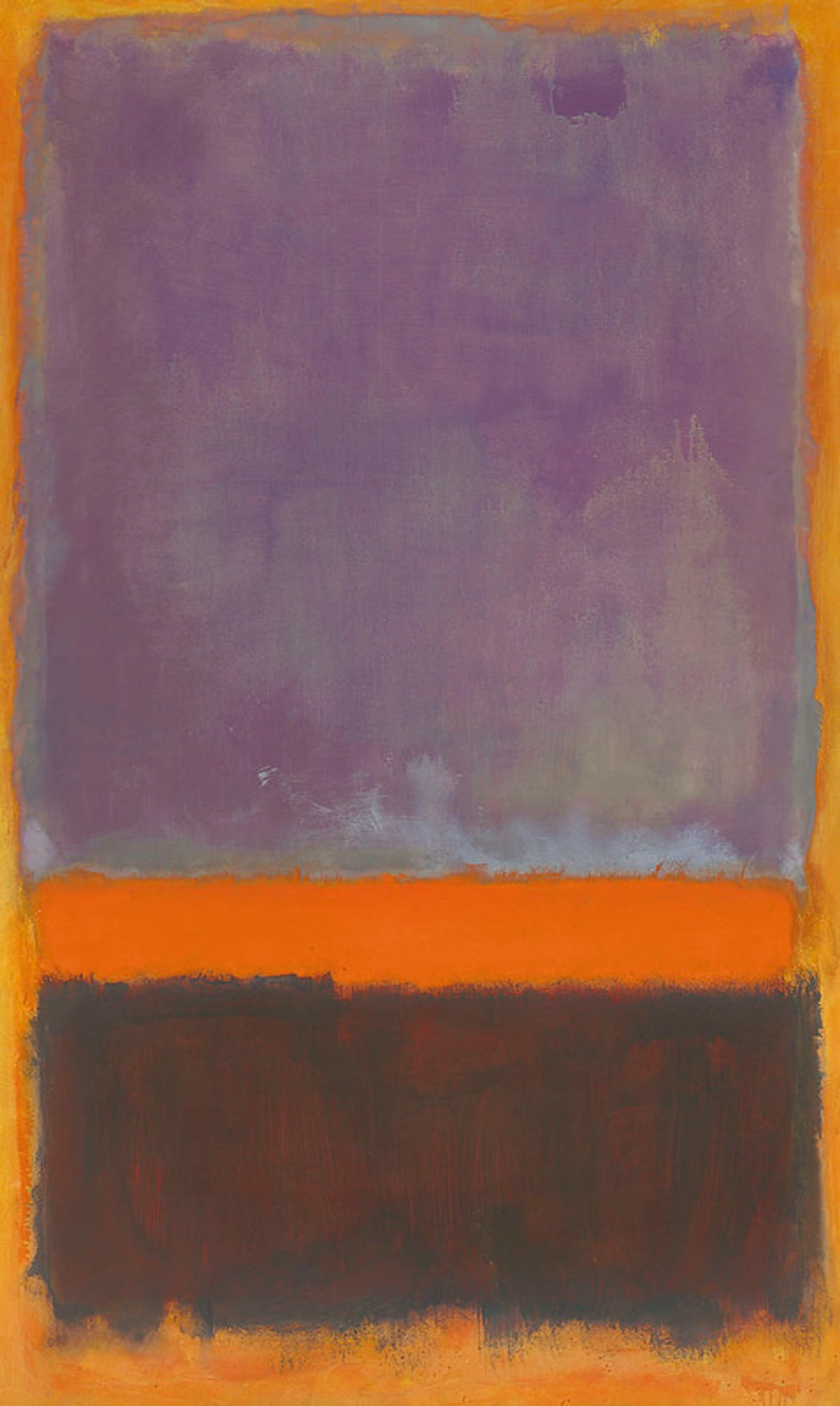
- Brushstroke/Texture: The application of paint itself can be expressive. Van Gogh's thick, impasto strokes convey intensity and raw emotion, a visual echo of his passionate devotion to his subjects and his art. The soft, blended brushwork of an Impressionist portrait might suggest intimacy and fleeting moments of connection, like the gentle touch of a loved one. Delicate lines in a drawing can speak of vulnerability, while bold, sweeping gestures might express overwhelming passion or the raw energy of creation, much like Rodin's powerful sculptures capture the intensity of the human form.
![]()
- Form and Composition: The way figures are arranged or shapes interact can express relationship dynamics. Embracing forms in sculpture (like the wooden one we saw earlier) or intertwined lines in an abstract piece clearly communicate connection and unity. Fragmented or distorted forms might speak to the pain or complexity of love, as seen in some of Picasso's or Kahlo's work, reflecting inner turmoil or fractured relationships. The proximity or distance between figures, the way they face each other, or the overall balance (or imbalance) of a composition can all tell a story about connection, longing, or harmony.
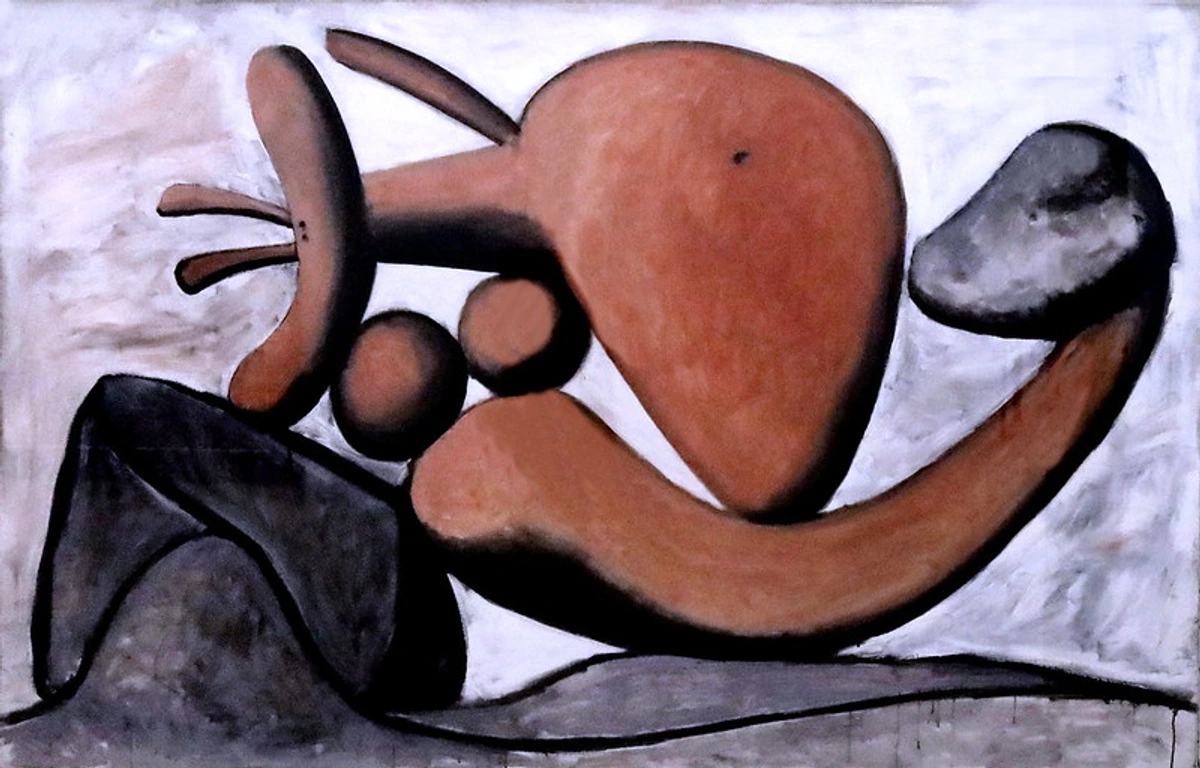
- Medium: The choice of medium itself can carry meaning. The permanence and solidity of bronze sculpture might suggest enduring love or the weight of deep connection, while the ephemeral nature of performance art can explore the vulnerability and fleeting moments of connection, like Marina Abramović's work on presence and trust. The intimacy of a small drawing or pastel portrait feels different from the public statement of a large mural celebrating community love. Even the choice between oil paint (rich, blendable, allowing for subtle nuances) and acrylic (fast-drying, bold, good for raw energy) can influence the emotional feel of a piece.
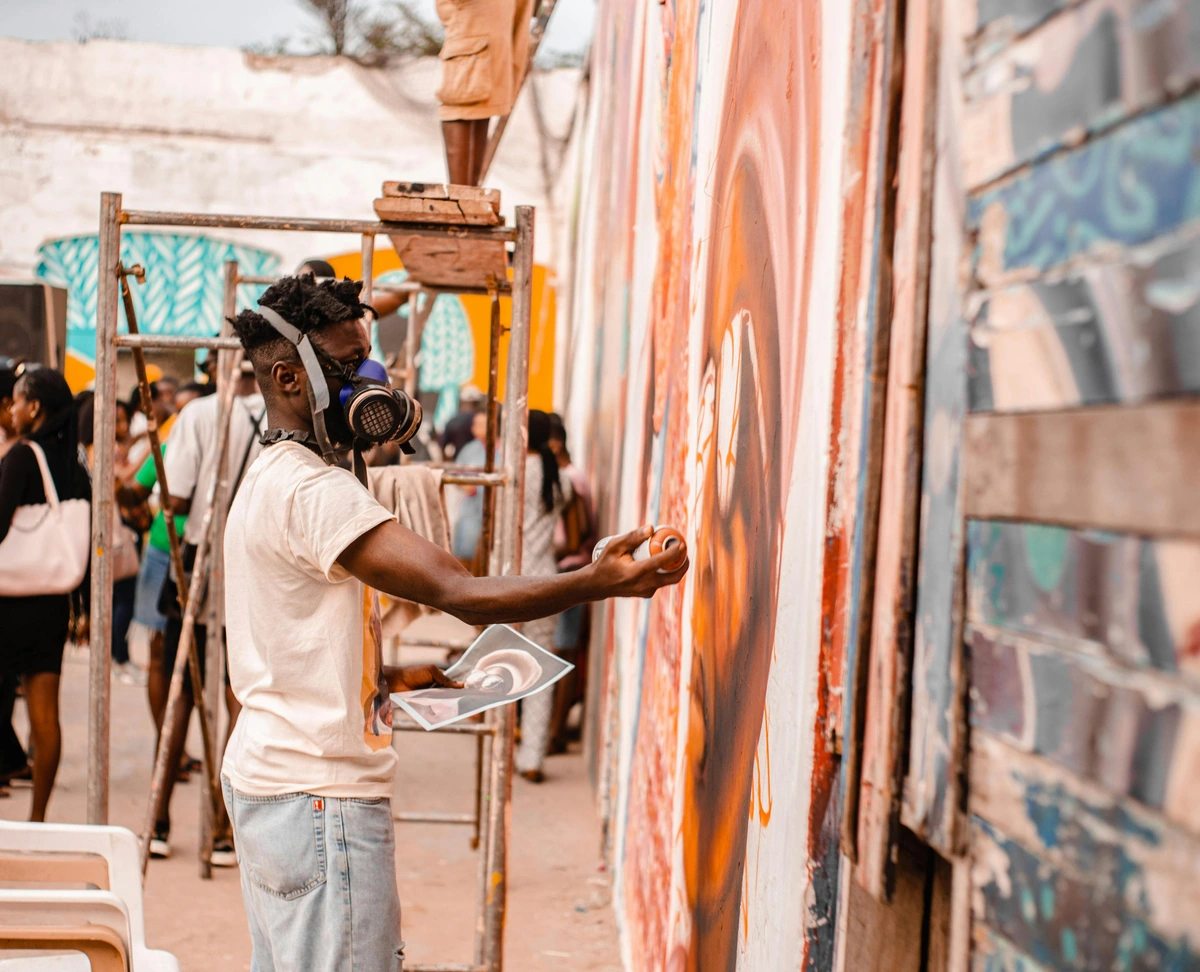
As an artist, I think about these things constantly. How can the texture of the paint convey tenderness? What color palette feels like the quiet comfort of home? It's another layer of the conversation between the artist, the art, and the viewer, all centered around feeling. It's the artist's way of whispering (or shouting!) about love without saying a single word.
Beyond the Canvas: Love as a Muse
Love, in all its forms – romantic, familial, platonic, self-love, love of nature, love of humanity, love of the creative process itself – has always been a powerful muse. It drives creation, inspires beauty, and sometimes, leads to the most poignant and relatable works. Whether it's the love for a partner, family, friends, nature, or even humanity itself, that deep connection fuels the creative fire.
How does love act as a muse? It can manifest in countless ways. It might inspire a specific color palette (the vibrant reds and pinks of passion, the calming blues of deep connection). It could influence the forms and lines you use (soft curves for tenderness, sharp angles for heartbreak). It might give you the courage to explore vulnerable themes you'd otherwise avoid. Or it could simply provide the emotional stability and support needed to dedicate yourself to the demanding process of making art. Love can also provide the courage needed to create and share vulnerable work, pushing you beyond your comfort zone.
I know for me, the feeling of being truly seen and loved gives me the confidence to be more vulnerable in my work, to experiment, and to put more of my authentic self out there. It's a safe harbor that allows for creative risk-taking. I remember working on a series of abstract pieces after a particularly challenging period, and it was the quiet, steady support of my partner that allowed me to push through the self-doubt and create something truly raw and honest. The calming blues and grounding earth tones in that series? Directly inspired by the sense of peace and stability that love provided. If you're looking for art inspirations, sometimes just reflecting on the love in your life is a powerful starting point.
Art as an Expression of Love
Beyond being inspired by love, art can be an expression of love. Creating something for someone you care about, choosing a piece of art that reminds you of a shared memory, or simply filling your home with art that brings you joy – these are all acts of love. Art can be a tangible manifestation of feeling, a way to communicate what words cannot. It can also be an expression of love for a community, a place, or even humanity itself, like a powerful mural or a piece of protest art.
Choosing art for your space is a deeply personal act. It's about surrounding yourself with things that resonate, that make you feel good, that reflect who you are and who you love. Whether you're decorating your home or looking for the perfect art gift, thinking about the feeling you want to evoke, the connection you want to celebrate, is key. I once created a small, abstract painting for a friend going through a tough time, using colors I knew brought her peace. It wasn't a grand gesture, but it felt like pouring my care for her onto the canvas. That's art as an expression of love. And creating art for yourself, simply because it brings you joy or helps you process emotions, is a powerful act of self-love, a visual form of self-care.
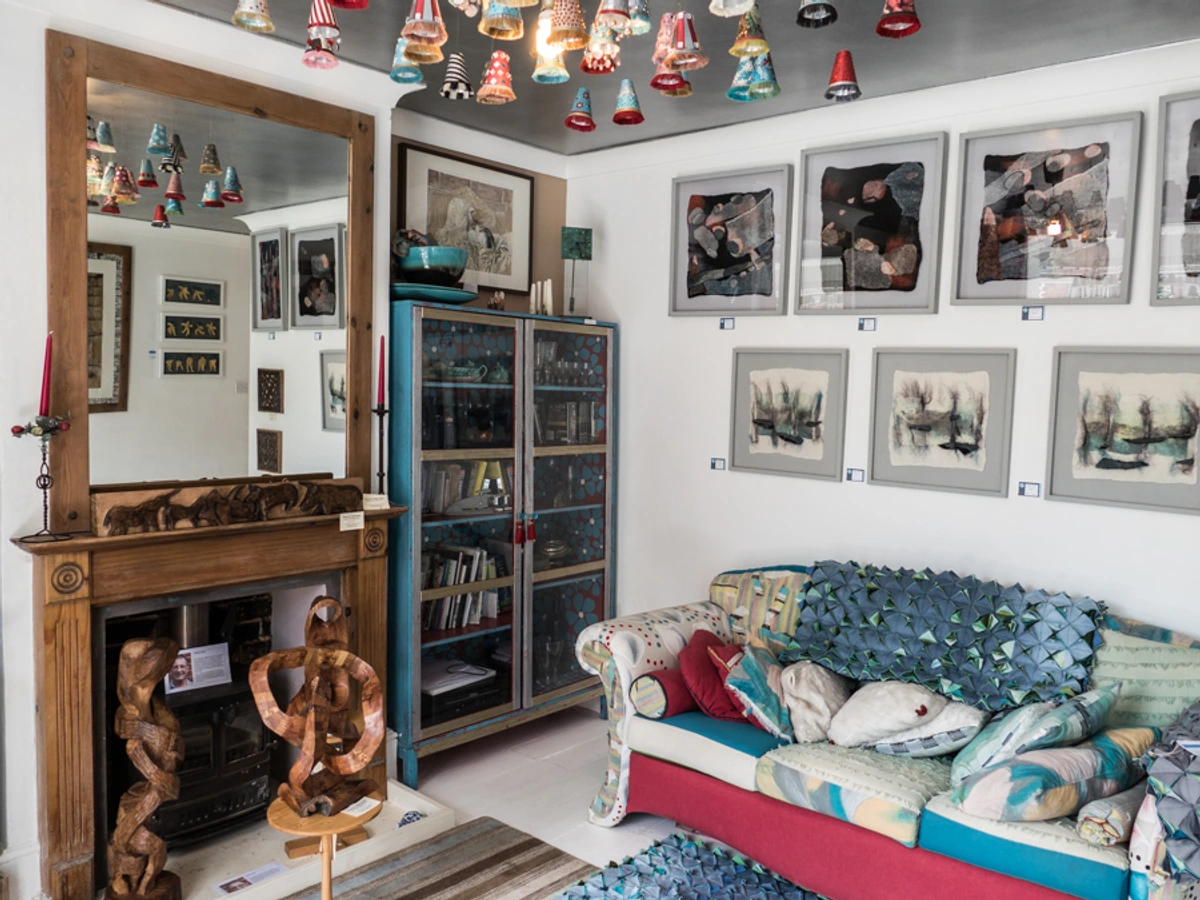
Finding Your Own Art-Love Connection
So, how do you connect with art that speaks to your heart, that celebrates love in a way that resonates with you? It starts with looking, feeling, and trusting your gut. Don't get bogged down in what you think you should like, or the sometimes-intimidating 'rules' of the art world. (Honestly, who made those rules up anyway? Probably someone who didn't feel enough love in their life, if you ask me.) It's not about being an expert; it's about being human.
Don't worry about what's 'important' or 'valuable' in the traditional sense (though you can learn about understanding art prices if you're curious!). Focus on what makes you feel something. What colors make you happy? What images evoke a sense of peace or excitement? What stories do you want on your walls? What art feels like a visual hug, or a moment of quiet understanding? Does it make you feel seen, understood, or simply... good? Pay attention to how a piece of art makes you feel in your body, not just your mind – does it make your chest feel lighter? Give you goosebumps? That's a powerful connection.
Exploring local art galleries or browsing art online are great ways to start. And hey, if you find a piece of my own art that speaks to you, that's a connection I'd be honored by! It's all about finding those pieces that resonate with your own unique experience of love and life.
FAQ: Art, Love, and Quotes
Can art truly express the feeling of love?
Absolutely. Art uses visual language – color, form, composition, subject matter, and even the chosen medium and technique – to evoke emotions and ideas that words sometimes can't capture. A tender portrait, a vibrant abstract piece, a powerful sculpture, a vulnerable performance – they can all communicate aspects of love, from vulnerability to passion to deep connection, and even the pain of loss.
What artists are most famous for depicting love?
Many artists have explored love throughout history. Think of Klimt's 'The Kiss', Renaissance depictions of Venus and Cupid, or even modern artists exploring relationships. It's less about one artist and more about a universal theme that appears across all art styles and periods. Artists like Frida Kahlo explored the complex, sometimes painful sides of love, while others like Matisse found love in the simple beauty of the world. Mary Cassatt is particularly known for her focus on familial love. Contemporary artists like Ai Weiwei explore love for humanity and justice.
How can I use art quotes to inspire my own creative process?
Art quotes can be powerful prompts. Read them, reflect on how they make you feel, and let that feeling guide your hand. Don't try to illustrate the quote directly, but think about the emotion or idea it evokes. How would you translate 'refreshment' or 'intensity' or 'seeing the flowers' into color, line, or form? You could create a mood board based on the feeling of a quote, or do a series of timed sketches exploring the emotion it evokes. Keep a journal of quotes that resonate and use them as starting points when you feel stuck.
What are some ways artists express the pain of love?
Artists often explore the flip side of love – heartbreak, loss, longing, and the vulnerability that comes with deep connection. This can be shown through somber color palettes, distorted forms, fragmented compositions, or poignant subject matter like solitary figures, empty spaces, or symbolic representations of grief. Frida Kahlo's work is a prime example of using art to process the physical and emotional pain tied to love and relationships.
What's your favorite art quote about love, and why?
Oh, that's a tough one! If I had to pick one from this list, it might be Matisse's "There are always flowers for those who want to see them." It reminds me to stay present and find beauty in the everyday, which is crucial for both my art and my relationships. It's a simple truth that holds immense power.
Where can I find more art quotes?
You can find art quotes in biographies, interviews with artists, art history books, and online resources. I even have a page dedicated to inspiring art quotes that touch on creativity and meaning, which might include more gems related to passion and connection.
How can I use art to express love for someone else?
Creating a piece of art specifically for them, choosing colors or subjects that you know resonate with them or represent your shared connection, is a deeply personal way. You could also select a piece of existing art that reminds you of them or a shared experience and gift it. Art can be a visual love letter.
Can art help me heal from heartbreak?
Absolutely. Art can be a powerful tool for processing difficult emotions like heartbreak and loss. Creating art allows you to externalize feelings that might be hard to articulate in words. Viewing art that explores themes of pain, resilience, or transformation can also provide solace, validation, and a sense of shared human experience. It can be a way to find beauty or meaning even in difficult times.
How can I find art that expresses my specific experience of love?
Start by reflecting on what love feels like to you. Is it calm and peaceful, or vibrant and chaotic? What colors, shapes, or textures come to mind? Then, explore different art styles and artists. Look at abstract art if you connect with pure emotion and color, or figurative art if you prefer relatable subjects. Visit galleries, browse online, and pay attention to what pieces resonate emotionally. Trust your intuition – the art that speaks to your unique experience of love will make itself known.
In Conclusion
Art and love are two sides of the same coin – both are about seeing, feeling, connecting, and sometimes, navigating the beautiful chaos of being alive on a profound level. The quotes artists leave behind offer us glimpses into that connection, reminding us that the drive to create and the capacity to love are deeply intertwined. They show us that whether through vibrant color, raw emotion, quiet observation, tender depiction of everyday bonds, a passionate call for justice, or the sheer dedication to the craft itself, artists have always turned to love as a source of both inspiration and expression.
So, next time you look at a piece of art, or think about someone you love, or even just notice the simple beauty of a flower, consider the beautiful, complex relationship between the two. And maybe, just maybe, it will inspire you to create something yourself, or simply appreciate the art (and the love) already in your life. It's all connected, you know? The messy, wonderful, sometimes baffling connection between art and love is what makes both so endlessly fascinating. Perhaps you'll even see echoes of these feelings in my own work.
